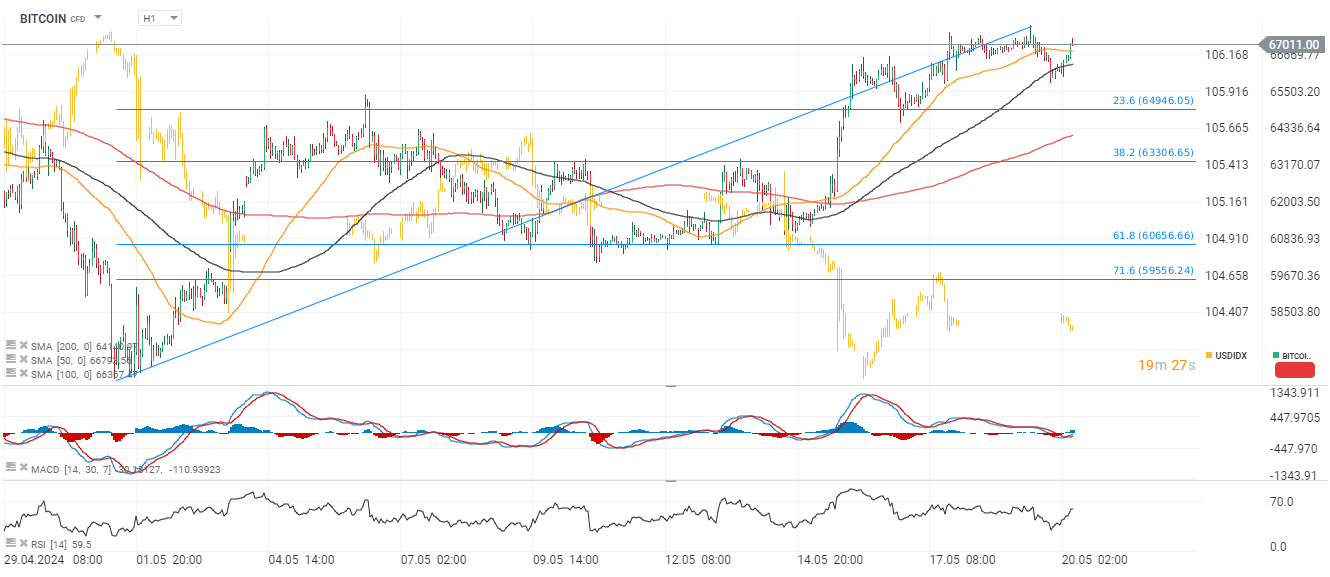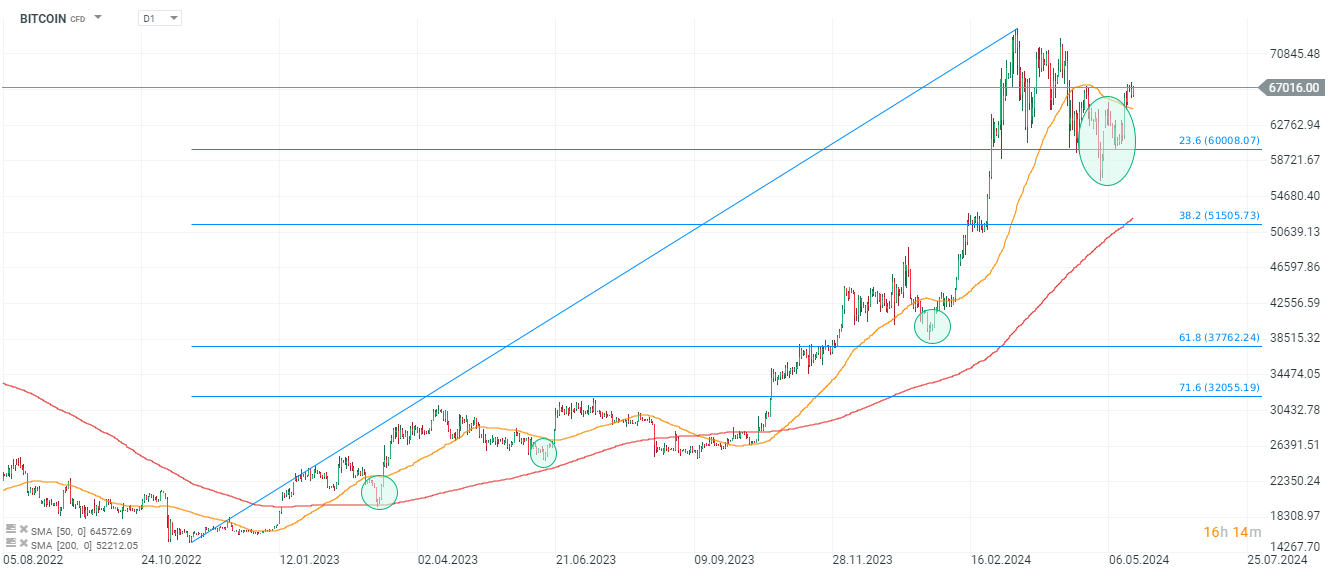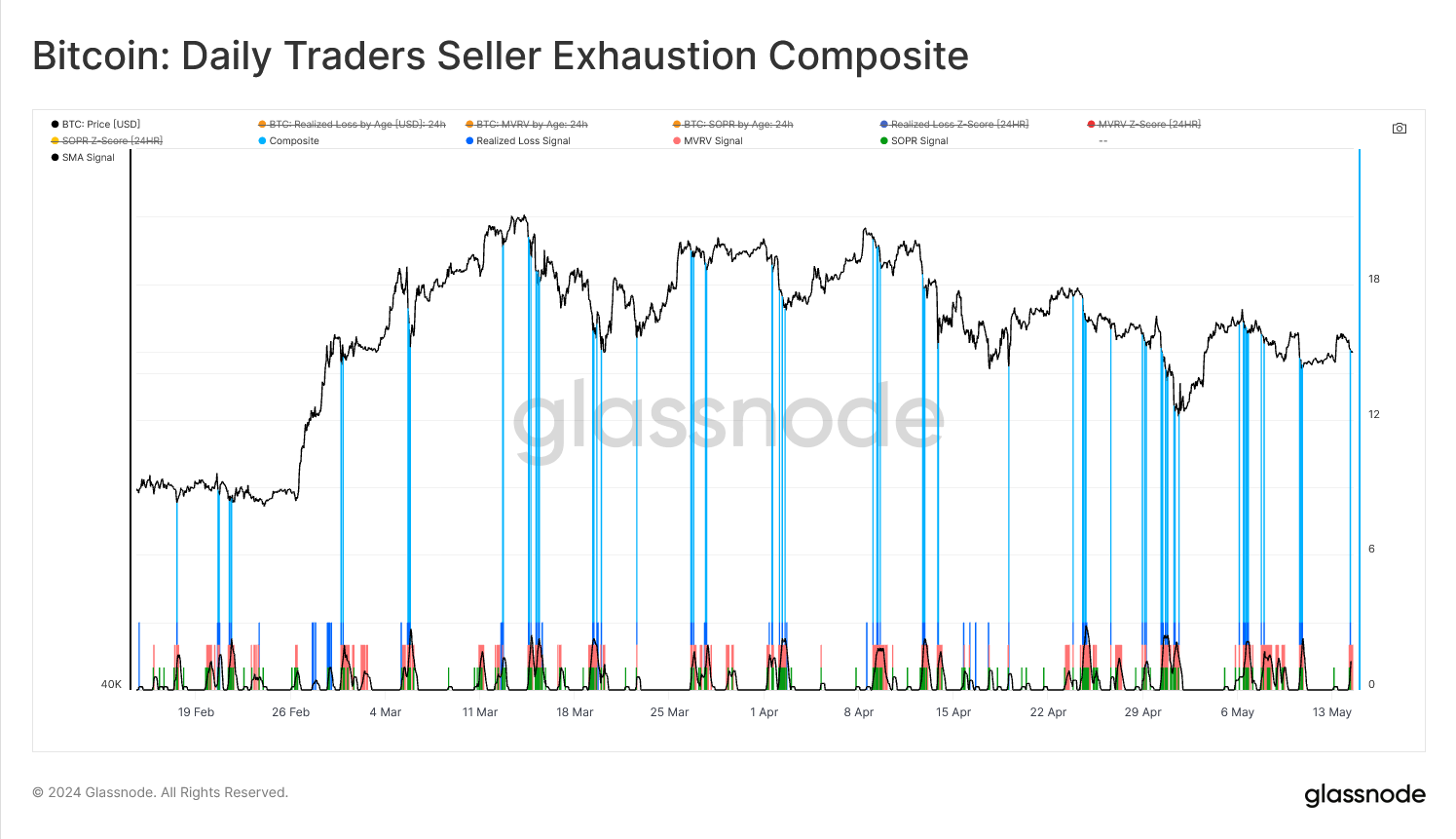The world's largest cryptocurrency continues to do well, with Bitcoin's price already rebounding more than 15% from April's lows. At the same time, the US dollar has been consistently weakening, 'weighed down' by slowly weakening macro data from the United States. BTC is also gaining amid a rebound in stock markets, fueled by strong results from US technology companies. It is also currently favored by a bull market in China, where investors are repositioning as the specter of deflation and a larger slowdown slowly recedes.
- The re-entry above key indicators of resistance (formerly support) of the average Short Term Holder Realized Price of Bitcoin and the average purchase price of BTC in U.S. ETFs, reassures markets that a surge in demand for risky assets and bonds, has halted the Bitcoin sell-off
- In addition, the reported recent changes in the portfolios of US funds managing more than $100 million in capital confirms that large institutions are interested in investing in ETFs. In the first quarter of the year, holdings in ETFs on BTC were concentrated by Morgan Stanley, Wells Fargo and US pension and hedge funds, among others. It may be a signal, that if US monetary conditions will change to dovish, demand for Bitcoin may be even stronger than now
- This week will likely bring a test of upward momentum for Bitcoin. On May 22, after the session, Nvidia will report results, and a number of Fed members will speak, commenting on recent inflation readings that have pleased Wall Street despite the still 'pro-inflationary' picture in services and other price indicators.
- Nvidia's report will close out fiscal 2024 and potential euphoria among tech companies could favor Bitcoin. On the other hand, disappointment with any element of the report; e.g., guidance or lack of 'new' growth catalysts from CEO, Jensen Huang's comments, could give an excuse for profit taking, with high valuations and record margins. If this is the case, it's hard to expect this not to reflect negatively on Wall Street and Bitcoin.
BITCOIN (H1, D1 charts)
We can see that Bitcoin's recent dynamic rebound coincided with the decline in the dollar index (USDIDX, the orange chart line). The price is once again trading above the SMA100, SMA50 and SMA200 on the hourly interval, indicating a potentially significant spike in volatility if the dollar and Wall Street see significant declines or increases again.
Start investing today or test a free demo
Create account Try a demo Download mobile app Download mobile appSource: xStation5
We can see that the April decline to $56,000 ended with a V-shaped rebound, and the price broke above the 50-session simple moving average (orange line). Momentum seems to 'favor' the bulls again. Previous V-shaped bounces have yielded sizable gains but despite on that, it's never guaranteed scenario.

Source: xStation5
On-chain data indicated that the source of Bitcoin's rebound was not only Wall Street surge but also the 'oversold' conditions and sellers exhaustion. As we can see on the chart (blue lines) historically, such a scenario has not always been a guarantee of a sustained BTC rebound Source: Glassnode
Source: Glassnode
Bitcoin's price rebound has drawn renewed interest in US ETFs. At the same time, we see high interest in the case of Fidelity (probably purchases of some funds), but BlackRock Bitcoin Trust is still recording rather 'subdued' inflows.
Source: Bloomberg Finance LP, XTB Research

